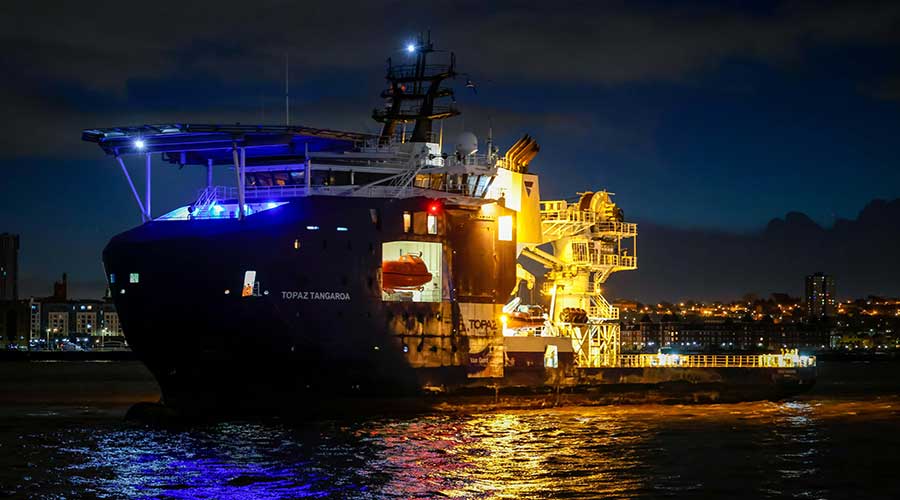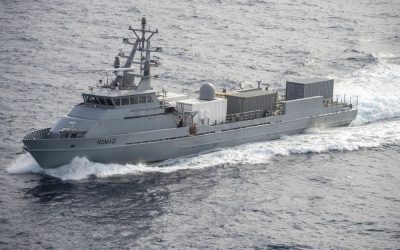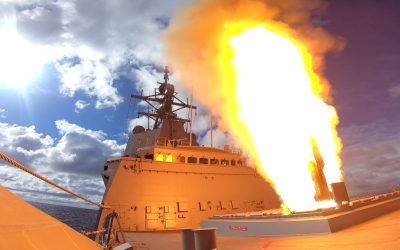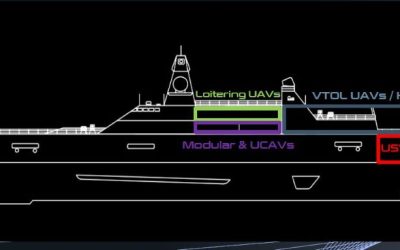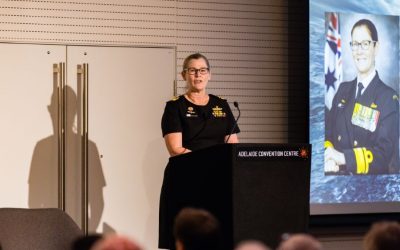The UK Ministry of Defence has acquired the commercial offshore support vessel, Topaz Tangaroa, for conversion to a Multi-Role Ocean Surveillance (MROS) seabed warfare platform.
Purchased from Topaz Energy & Marine by the Ships Acquisition team at Defence Equipment and Support (DE&S) at a cost of £65 million (US$79 million), the vessel is now being modified for its new role at Cammell Laird, ahead of entering service with the Royal Fleet Auxiliary (RFA) later this year as RFA Proteus.
Tasked to safeguard the UK’s undersea communications and energy infrastructure, it will be the first of two planned MROS ships to be operated by the RFA.
Topaz Tangaroa was built in 2019 by Vard Braatvaag in Norway to the VARD 3 08 series design. With a length overall of 98.1m, a beam of 20m, and a deadweight displacement of 3,000tonnes, the VARD 3 08 series design is optimised for good seakeeping, excellent station keeping performance, and low fuel consumption. Other features include a large (1,000m2) working deck aft, a large deck crane, a central ‘moonpool’ to expand the operating envelope for operations with ROVs or autonomous underwater vehicles in high sea states, and a helipad above the bridge deck.
Arriving at Birkenhead on 19 January 2023, the vessel is being repainted for its new role: additions and alterations are primarily associated with the installation of military communications and mountings for small-calibre weapons.
Navy Command commenced a separate but associated tender activity in February 2023 to source a Containerised Remotely Operated Towed Vehicle (ROTV) system capability that will operate in a seabed warfare system of systems. The intent is that this vehicle to be operated from – but not limited to – the MROS platform.
The ROTV requirement calls for a vehicle that will provide an accurate, steerable, open and flexible multi-sensor platform to be deployed for a wide variety of underwater data acquisition and inspection applications.
According to the Royal Navy, the selected ROTV solution is to undertake a range of functions, including pipeline inspection, large area searches and mine countermeasures, site surveys and seafloor mapping, cable route surveys, high resolution object detection, and oceanographic data collection through the water column.
Proteus is expected to become operational with the RFA in mid-2023. A second MROS vessel, due to enter service towards the end of the decade, is currently in the concept phase. The current assumption is that this will be a new and more complex UK-built platform, fitted with a sophisticated sensor payload and a suite of remotely operated and autonomous undersea vehicles. It is intended that this follow-on programme will provide several capabilities, including the oceanographic survey capability currently provided by HMS Scott.
